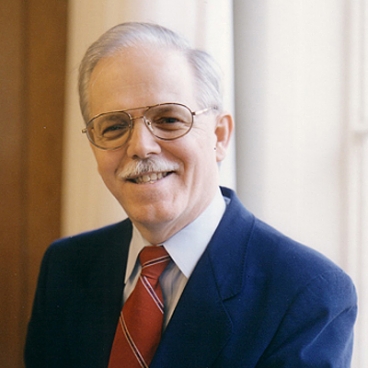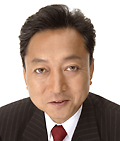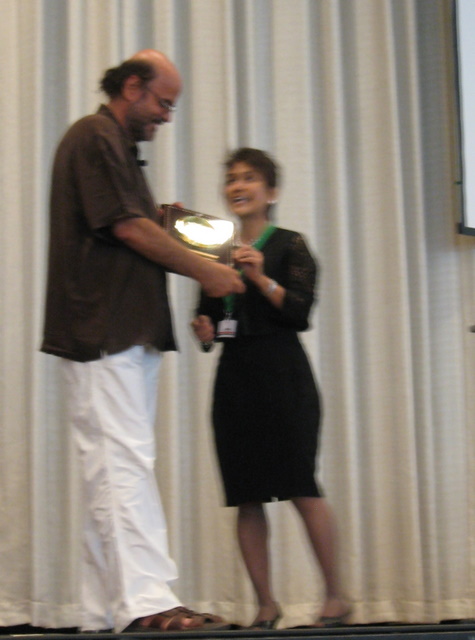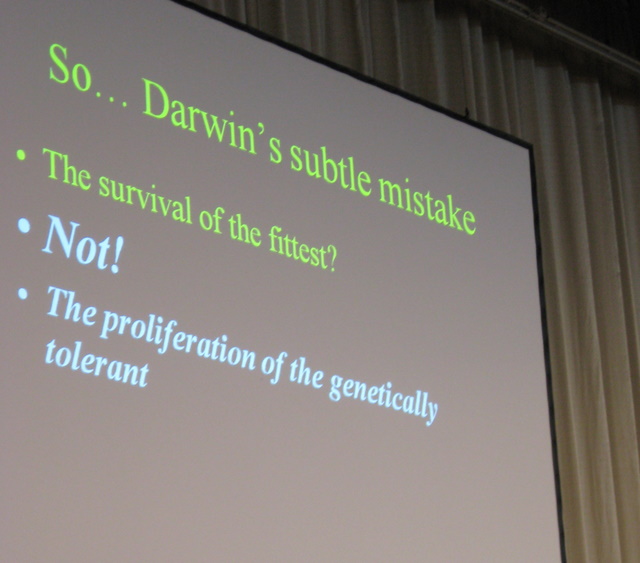Yesterday I was messing around with The Mathematics Genealogy Project and I learned that Anna Nagurney, among others, is a not-so-distant cousin. That inspired me to shoot off a couple of emails trying to trace my history farther back.
To recap, my advisors were Don Ratliff and John Bartholdi. John was a student of Don, so Don is both my father and grandfather, a situation that would certainly raise eyebrows outside of academia. Don’s advisor was Manny Bellmore who did a lot of fundamental work in the late 1960s and 70s on the traveling salesman problem and various other optimization problems. Manny’s advisor was Frederick (Tom) Sparrow, who did extensive work in energy modeling and policy, among other things. Bellmore also worked with George Nemhauser, but George was on leave in England when Manny graduated, so Sparrow was the advisor. It is through Sparrow that I am related to Nagurney.
To continue earlier in history, I shot off an email to Tom, who is emeritus from Purdue. Fortunately my email got through the spam filters (starting an email “Hello Great-Grandfather” does make it sound like a plea from a Nigerian prince), and he could tell me about his advisors. He had two The first was an economist named Kenneth Boulding. This is a name I should know but do not. He did some fundamental work in systems science and conflict analysis starting in the mid-1950s with some papers that are incredibly well cited. When the wikipedia description begins with:
Kenneth Ewart Boulding (January 18, 1910 – March 18, 1993) was an economist, educator, peace activist, poet, religious mystic, devoted Quaker, systems scientist, and interdisciplinary philosopher
it is clear we are talking about someone unusually interesting.
Tom’s other advisor is, however, known to me (as it is to many in operations research): Merrill Flood (1908-1991). Flood was a founder of the field of operations research. He worked on transportation problems in the 1930s and developed the “Northwest Corner” rule for finding a solution to such problems, before Dantzig developed a general method for optimizing these problems. He also was an early researcher on the game-theory problem Prisoner’s Dilemma. He was also an influential popularizer of the Traveling Salesman Problem. He was the second President of TIMS, and he received the Kimball Medal for services to the field (a designation I have the honor to share with him).
Flood happens to be in the Mathematics Genealogy Project (though without listed advisees) and his advisor was Joseph Henry Maclagan Wedderburn (1882-1948), Scottish-born algebraist who taught at Princeton for most of his career. Wedderburn’s advisor was George Chrystal (1851-1911), whose advisor was James Clerk Maxwell (1831-1879), father of electromagnetic theory! Checking out his wikipedia article leads to the immortal verse:
Gin a body meet a body
Flyin’ through the air.
Gin a body hit a body,
Will it fly? And where?
Going back from Maxwell, we get William Hopkins (1793-1866), who combined mathematics with geology. I love the wikipedia entry on his private life:
Hopkins enjoyed music, poetry and landscape painting. He spent the end of his life in a lunatic asylum in Stoke Newington. He died there of chronic mania and exhaustion.
Perhaps not an unusual ending for mathematicians.
Back from there we get Adam Sedgwick (1785-1873), a founder of geology. He had two advisors: Thomas Jones (1756-1807) and John Dawson (1734–1820), a mathematician and surgeon. Dawson leads to Edward Waring (1736-1798), a Lusasian Professor of Mathematics.
On the Jones side, we get two advisors: John Cranke (1746-1816) and Thomas Postlethwaite (1731-1798). Fortunately Cranke was the student of Postlethwaite, so we don’t branch (making an already large lineage even bushier). At this point we hit two Cambridge tutors: Stephen Whisson (?-1783) and Walter Taylor (c1700-1743). Taylor was trained by Robert Smith (1689-1768), known as Old Focus for his work in optics. Smith leads to Roger Cotes (1682-1716), who worked closely with his advisor… Sir Isaac Newton! That makes Sir Isaac my Great-Great-Great-Great-Great-Great-Great-Great-Great-Great-Great-Great-Great-Grandfather (academically speaking).
From Philosophiæ Naturalis Principia Mathematica to A Dynamical Theory of the Electromagnetic Field to trying to schedule 8 team sports leagues in a mere 15 generations. On the shoulders of giants indeed!
I suspect that if the system was completely filled in, we would all be descendants of Newton. But I am walking a little taller today, and feeling a bit more pressure in my research, knowing of my illustrious ancestors.
 Sunil Kumar, currently at
Sunil Kumar, currently at  I spent 2007 visiting the University of Auckland, living on the wonderful (and strange) island of Waiheke, and I have about a
I spent 2007 visiting the University of Auckland, living on the wonderful (and strange) island of Waiheke, and I have about a  AT&T Labs researcher
AT&T Labs researcher 

 It can even lead to becoming Prime Minister of the country with the world’s second largest economy. Yukio Hatoyama, Prime Minister designate for Japan, is not just trained in operations research but has a Ph.D. from Stanford in the subject. A
It can even lead to becoming Prime Minister of the country with the world’s second largest economy. Yukio Hatoyama, Prime Minister designate for Japan, is not just trained in operations research but has a Ph.D. from Stanford in the subject. A  Christos Papadimitriou of UC Berkeley was the
Christos Papadimitriou of UC Berkeley was the  Christos’ fundamental point is that perhaps selection under recombination does not maximize fitness. Instead, it favors “mixability” (or genetic tolerance). And this mixability accelerates speciation, and accelerates evolution. There is a paper in the Proceedings of the National Academy of Science that explains this all in more detail.
Christos’ fundamental point is that perhaps selection under recombination does not maximize fitness. Instead, it favors “mixability” (or genetic tolerance). And this mixability accelerates speciation, and accelerates evolution. There is a paper in the Proceedings of the National Academy of Science that explains this all in more detail.